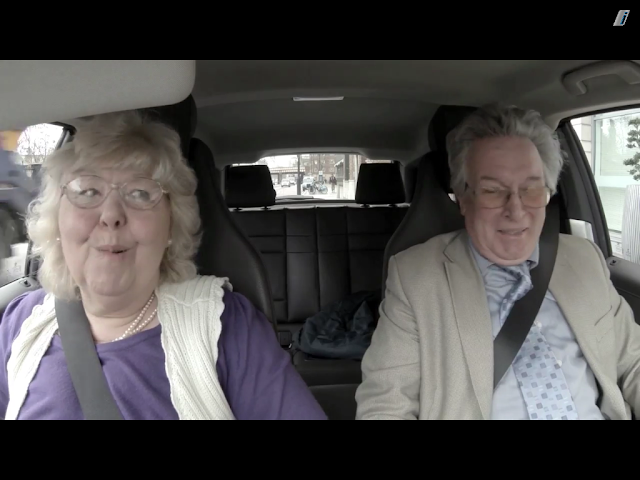
California issued a storage mandate and settled its net metering debate last year. Texas is in the process of overhauling its ancillary services market. Minnesota has set a value-of-solar tariff. But all of that is small potatoes compared to the market transformation for electric distribution utilities that New York just announced.
New York's Governor Andrew Cuomo has asked his public state commission and chairman of energy and finance, Richard Kauffman, to fundamentally shift utility regulation to meet the needs of a more distributed, consumer-focused energy system.
"The existing ratemaking structure falls far short of the pace of technology development that defines many parts of our economy," Audrey Zibelman, chair of the New York Public Service Commission, said in a statement. "By fundamentally restructuring the way utilities and energy companies sell electricity, New York can maximize the utilization of resources, and reduce the need for new infrastructure through expanded demand management, energy efficiency, renewable energy, distributed generation, and energy storage programs."
While most states are grappling with net metering, standby and demand charges, New York's PSC has laid down the gauntlet in a proposal, Reforming the Energy Vision. The report calls for an overhaul of the regulation of the state's distribution utilities to achieve five policy objectives:
- Increasing customer knowledge and providing tools that support effective management of their total energy bill
- Market animation and leverage of ratepayer contributions
- System-wide efficiency
- Fuel and resource diversity
- System reliability and resiliency
"One key outcome of the transformation is to address the Commission's stated objective to make energy efficiency and other distributed resources a primary tool in the planning and operation of an interconnected modernized power grid," the report states.
The PSC is the first to admit that the system is broken. The bulk power system is oversized to meet the demand of the few hours of peak demand every year; the transmission and distribution system has annual losses of nearly 9 percent; the commodity markets are inefficient; and there isn't adequate storage for electricity.
To rectify these and other issues in the market, the PSC is calling for utilities to become Distributed System Platform Providers. The DSPPs will upgrade the distribution network and then "create markets, tariffs and operational systems to enable behind-the-meter resource providers to monetize products and services." They will essentially become the purchaser and aggregator for distributed resources.
"It's time for the regulatory system to catch up with advances in clean energy, and New York is one of the first states to act. New York's re-evaluation of the utility business model will spur a future in which solar and wind power and energy efficiency can deliver grid resilience and reduce pollution," Cheryl Roberto, associate VP of clean energy for Environmental Defense Fund, said in a statement. "This is a move of national significance and should reverberate across the country."
Other key stakeholders in New York agree. A working group that came out of a recent Advanced Energy Economy forum, which includes Consolidated Edison, PSEG Long Island and New York Power Authority, concluded that a more competitive business model is needed, one in which benefits are redefined to capture consumer value, system resiliency and efficiency.
The first task for the DSPPs will be to eliminate peak, which the PSC has identified the best example of the value of modernizing the grid and its markets. Rather than set a storage mandate as California has, DSPPs will identify economic applications of storage and likely move toward time-based rates.
Ratemaking for the Future
As distribution utilities shift toward functioning as managers of distributed energy resources, they will need new ways to make money. The second part of the reformation will be an overhaul of the traditional rate of return using an annual rate case cycle, with a new focus on long-term (up to eight years) performance-based rates emphasizing results for customers and system efficiency.The new rates could affect not just distribution system efficiency, but efficiencies within the utility. "The most effective outcome paradigm may be one that creates a network of incentives with an enterprise-wide effect," the PSC report states. "That is, any given employee or mission within the enterprise should be linked in some way to an outcome that, if achieved, will result in improved earnings."
New rates will likely be based much more on time, flexibility and controllability. Instead of flat rates, there will need to be "a greater unbundling" of products and services. The PSC is aware that the new results-based approach cannot come at the expense of the obligation to deliver reliable and affordable power, a challenge that is acknowledged in the report and will have to be addressed in the months ahead.
One model that New York state is looking at is the United Kingdom, where the regulatory body changed its ratemaking policies to encourage innovation and manage more decentralized energy assets.
The PSC hopes to move quickly, but even lightning speed for a state regulatory body could still prove to be relatively slow. The PSC expects to have "policy determination on issues relating to regulatory design and ratemaking in the first quarter of 2015," with the first status report coming this summer.
The gap between policy determination and implementation is unclear. The PSC states that "a reasonable and realistic sequence will be essential," and, among other factors, will depend on standardization of communications equipment to control distributed energy resources. Zibelman's role at the helm of the PSC could make a difference, as her experience in the private sector could help her accomplish real reform.
If the major electric utilities, such as NYPA, Con Ed and PSEG Long Island (formerly LIPA), are really on board, it could be one of the fastest-moving regulatory proceedings any state commission has ever seen for an overhaul of this magnitude. But even if stakeholders align, it will be a challenge to move the process forward as fast as innovation is happening at the grid edge. The stakes are huge, however, and the outcome could have impacts well beyond the Empire State borders.
"New York is now at the forefront of states looking to find answers to a rapidly evolving energy industry," Rory Christian, director of New York Clean Energy at EDF, said in a statement. "To be clear, this proceeding is not a destination, but a significant step toward a future where people have the option to play a greater role in how they use energy."

























































